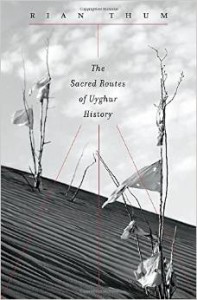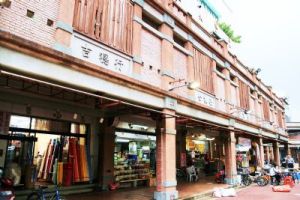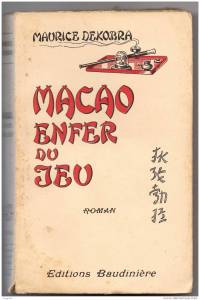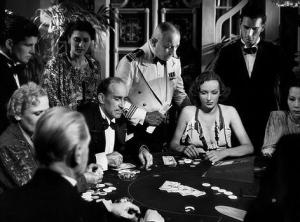Posted: October 27th, 2014 | No Comments »
Rian Thum’s The Sacred Routes of Uyghur History looks like an interesting read….
Read an excerpt from the book here

For 250 years, the Turkic Muslims of Altishahr—the vast desert region to the northwest of Tibet—have led an uneasy existence under Chinese rule. Today they call themselves Uyghurs, and they have cultivated a sense of history and identity that challenges Beijing’s official national narrative. Rian Thum argues that the roots of this history run deeper than recent conflicts, to a time when manuscripts and pilgrimage dominated understandings of the past. Beyond broadening our knowledge of tensions between the Uyghurs and the Chinese government, this meditation on the very concept of history probes the limits of human interaction with the past.
Uyghur historical practice emerged from the circulation of books and people during the Qing Dynasty, when crowds of pilgrims listened to history readings at the tombs of Islamic saints. Over time, amid long journeys and moving rituals, at oasis markets and desert shrines, ordinary readers adapted community-authored manuscripts to their own needs. In the process they created a window into a forgotten Islam, shaped by the veneration of local saints.
Partly insulated from the rest of the Islamic world, the Uyghurs constructed a local history that is at once unique and assimilates elements of Semitic, Iranic, Turkic, and Indic traditions—the cultural imports of Silk Road travelers. Through both ethnographic and historical analysis, The Sacred Routes of Uyghur History offers a new understanding of Uyghur historical practices, detailing the remarkable means by which this people reckons with its past and confronts its nationalist aspirations in the present day.
Posted: October 26th, 2014 | No Comments »
Came across this cover the other day. Edgar Wallace’s 1926 The Yellow Snake (Sometimes called The Black Tenth) concerns Fing-Su, a graduate of Oxford and head of the dread Society of the Joyful Hands, which he leads in his quest to dominate the world. The name “Yellow Snake” was bestowed on him by his opponent, Clifford Lynne. Not dissimilar to a Fu Manchu, Fing-Su employs blackmail, bribery, and kidnapping to further his own nefarious aims. There’s a more detailed review of the novel here.



Posted: October 25th, 2014 | No Comments »
It seems Taipei has really started to get its act together as regards preserving historic buildings. I’ve blogged before about the Dihua Street restoration and other projects. Now it has been announced that Tsaoshan Police Station will be preserved as a local government-listed historic building, according to Taipei City’s Department of Cultural Affairs. The station was designed by architect Ide Kaoru, a chief engineer in Taiwan during the Japanese colonial period (1895-1945), and the man behind the listed Zhongshan Hall. The station is in the Yangmingshan district which I’ve blogged about repeatedly and is an area full of architectural candidates for preservation that are both of interest and have a historic role in Taipei’s history.
More good news, and correcting bad decisions of the past, is that the building is located close to the site of Taiwan Railways Administration’s 100-year-old Xinbeitou Station, which was dismantled in 1988 to make way for the Tamsui metro line and is now scheduled for reassembly this year. The authorities have approved shifting the station 50 meters from its original position and allocated NT$20.6 million (US$678,425) for the undertaking.
Now a couple of other suggestions for preservation in the area:
The Aifu Road bungalows, which have always looked like potentially highly desirable residences to me – more on them here too
the Grass Mountain waterworks

Tsaoshan Police Station

The old Xinbeitou Railway Station – scheduled to be rebuilt this year
Posted: October 24th, 2014 | 1 Comment »
An interesting report from the China Tourism Academy (yes, you read that right, “an interesting report from the China Tourism Academy”) cited on the WSJ’s China blog about why China can’t rejuvenate its tourism numbers from the 2008 (Olympics) high. For once it’s quite an honest report that seems to seek the real problems – air pollution of course, toxic food chain, water quality, fears of terrorism of course. But they also cite lack of access for disabled visitors, which has been a long standing problem and also poor prservation. I’ll quote at some length from the piece….
A state media report on the topic carried earlier this year by China Daily also cited experts who faulted the country’s haphazard approach to historical preservation as a reason behind waning tourism enthusiasm. Across China, lanes built in a heavily reconstructed, faux-historical design selling identikit souvenirs are the norm, a disheartening phenomenon for tourists hoping for more of a sense the authentic.
“We have to value our local history and China’s cultural heritage. That’s what foreigners come to China to see, not soaring skyscrapers and wide streets, which can be seen in every Western country,†the report cited Peking University’s Wu Bihu, professor focusing on tourism development, as saying.
And yet here we are with Shanghai’s Xintiandi still being lauded as a best in class example of preservation (!!) and Dongtai Lu antiques market (admittedly long degenerated to largely “selling identikit souvenirs”) about to fall to the bulldozers for a series of “skyscrapers and wide streets.”
Not that anything will change – property developers in league with the Party will remain the dominant force, so-called renovations will remain haphazard and ill-planned and badly executed…but at least nobody can say they weren’t told.

Not exactly an inducement to tourism

There was once a hutong over there, but don’t worry you can’t see anything anyway
Posted: October 23rd, 2014 | No Comments »
Midnight in Peking, or rather in Spanish Medianoche en Pekin, will be at Spain’s premier crime writing festival this week – Getafe Negro – in Getafe, just outside Madrid. To say I’m excited is an understatement – as well as the chance to attend the festival it has to be admitted that this is the author’s first ever visit to Spain (yes, an Englishman in his late forties who has never been to Spain!! – a mystery indeed). Many thanks to my great Spanish publishers Plataforma Editorial for arranging it all.

·Friday 24th of October:
–5 pm:
‘Midnight in Peking’ with Paul French and Spanish crime fiction writer Joserra Gómez – Carpa de Actividades (Tent of Activities).
–6 pm:
“Nosotros, los muertos” (“We, the Dead Ones”), a panel about the literary figure of the victims at the crime fiction with Paul French, Berna González Harbour, VÃctor del Ãrbol and Carlos Zanón. Moderated by and the crime fiction writer David G. Panadero – auditorium Fábrica de Harinas (Flour Mill)
Posted: October 22nd, 2014 | No Comments »
How excellent to see that the restoration of Taipei’s Dihua Street in the city’s Dadaocheng district has been continued (I blogged about the start of the process here back in 2011) and is being celebrated by local residents. Since I last wrote about the restoration of the 1920s local businesses have moved in with a bookstore, art gallery, pottery etc etc…It’s a pretty good example of how facades can be preserved, new businesses adopt the properties with government support and a community come together to celebrate both heritage (largely free of PRC like political correctness) and commercialization to maintain the area. The Taipei Times has an article on the now annual 1920s festival organised along the street. Around the same time, in 2011, I posted on several impressive buildings nearby that are also in need of refurbishment and, given the public and commercial success of Dihua Street, may get a makeover and be better preserved now. Shanghai, Beijing and a host of other Chinese towns and cities would do well to take a closer look at the Dihua Street initiative.

Dihua Street on a busy market day

Restored colonnades and shops

Key corner building and colonnades

Nicely restored facades

Shop houses and street – still functioning without being ersatzed into a pedestrian street or Xintiandi type faux attraction – remaining a working, vibrant, commercial street with shops, cafes etc for all wallet sizes and not just the nouveau riche and tourists
Posted: October 22nd, 2014 | No Comments »
The lost world of Ladakh: reclaiming the past, sustaining the future
24 October 2014, 17:30-20:30, Royal Geological Society, Burlington House, Piccadilly, London W1J 0BG
The Geological Society recently co-organised an international conference in Leh, the capital of the historic Himalayan kingdom of Ladakh. Sustainable Resource Development in the Himalayas brought together scientists from the Himalayan nations and around the world, to discuss with policy-makers and community representatives how to develop sustainably the rich and varied resources of the Himalaya, to benefit the local communities and nations to which they belong. This conference was preceded and followed by an education programme, with interactive classes focusing on topics such as energy efficiency, climate change and natural hazards. Students were encouraged to take personal responsibility for what they can do to help address these challenges, and to act as ambassadors in their communities. Students demonstrated both a willingness and personal commitment to such tasks, eager to take seriously sustainable development in the region.
History offers us a valuable tool to understand and plan for development. The Lost World of Ladakh: Early Photographic Journeys in Indian Himalaya (1931-1934) is a recently published book, profiling the photographs of Rupert Wilmot, a British solider serving in India. These photographs give us a unique opportunity to visualise this region in the 1930s. The ability to contrast such images with images taken 80 years later provides an insight into both environmental and cultural change.
This evening event will include presentations by the authors of The Lost World of Ladakh and organisers of the Sustainable Resource Development in the Himalayas conference. A discussion session will draw upon wider expertise of this fascinating region, as we consider how an understanding of the past can help to build a sustainable future. A photo exhibition and wine reception will then give participants the opportunity to talk informally about this region and the work being undertaken.
Posted: October 21st, 2014 | No Comments »
Having posted yesterday about Jean Delannoy’s movie Macao, L’enfer du jeu, I thought it worth going back for a quick post on the original 1938 book that inspired the movie, Maurice Dekobra’s Macao, L’enfer du jeu. Dekobra was seen as a somewhat subversive writer in France in the interwar period, though was widely read and regularly a bestseller – indeed “dekobraism” was used to describe the use of journalist style narrative in novels at the time (though is now almost totally forgotten sadly). He did travel in Asia to Japan and China both before the war and after. His English and German were both excellent and, during the First World War, he was sent by France to be a liaison with, first the Indian Army, and then the United States forces. Dekobra decamped to America during the war rather than stay in France under the German occupation. He returned afterwards and wrote mystery novels, several set in China as well as a couple of travelogues of his journeys (of which more in a later post).
 Dekobra
Dekobra
 An early edition of Macao, L’enfer du jeu
An early edition of Macao, L’enfer du jeu
 A later paperback
A later paperback
 A scene from the movie version
A scene from the movie version


















